I learned one of the most important lessons about becoming a professional wedding photographer very early on in my career on the way to photographing a wedding in a car stuck in a monumental traffic jam on a motorway. Hardly moving for well over an hour I was powerless as the minutes ticked by and the wedding got closer and closer.
The feeling of sickening panic was welling up inside the pit of my stomach as I imagined the wedding starting without me there to photograph it, I would have to return my fee, the bride would be furious and upset, the guilt would be terrible. I finally arrived. I was on time – just. Why? Because I had used up all of my contingency time, and all the time I had allowed to photograph the venue when I arrived but I was there ready to photograph the bride getting ready exactly when I said I would be.
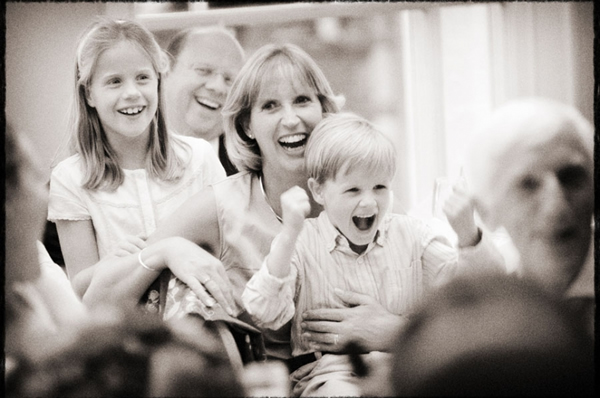
I learned that you can never be too prepared, leave too early or plan too much! Weddings can be stressful occasions with a lot at stake and the better prepared you are the easier and more predictable the outcome of the day.
The tips below are taken from my own personal experience and are things that I actually do at every wedding I photograph. I have tried to avoid the usual and obvious and in doing so feel that I might come across as being a little fanatical or “belt and braces” as my Grandfather would have said but creating the list has helped me to distil some of the reasons why I feel that I photograph weddings in a reliable and professional way. I think that many of them set apart the professional approach from the jobbing amateur!
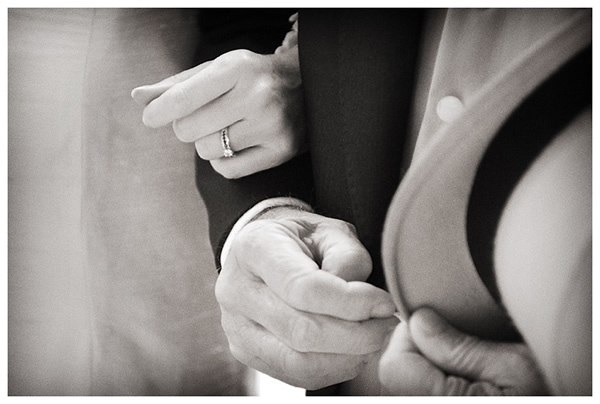
So, without any further ado, here we have (in no particular order) 100 Professional Wedding Photography Tips!
- You can’t do anything if you can’t get to the weddings so check your locations and routes carefully. Use an up to date Sat Nav but always back this up with a good map. A route finder is good for longer journeys and then print off a detailed Google Map for the precise location. Sat Navs fail and can be inaccurate – make sure that you have adequate map back up.
- On a hot wedding day take a change of shirt/blouse/top for the evening. In fact do it anyway even if it’s not hot! It’s amazing how revitalising a freshly laundered item can be.
- Always keep your memory cards on you. A belt mounted holder works well and allows you to always have a change of card with you and, most importantly means that your valuable full cards can’t be lost or stolen.
- Download the images at the wedding onto a laptop or similar device. I generally download onto my laptop when the guests are eating and I am having a break. The reassurance of driving away from the wedding knowing that I have two copies of the files and having had a quick look through them is worth it’s weight in gold and helps me sleep that night!
- Agree the list of family group shots with the bride and groom well before the wedding. They may well need to discuss this with other family members and during the drinks reception is NOT the time! On the odd occasion where I have been asked to add group photographs I always clear it with the bride (no one else) first.
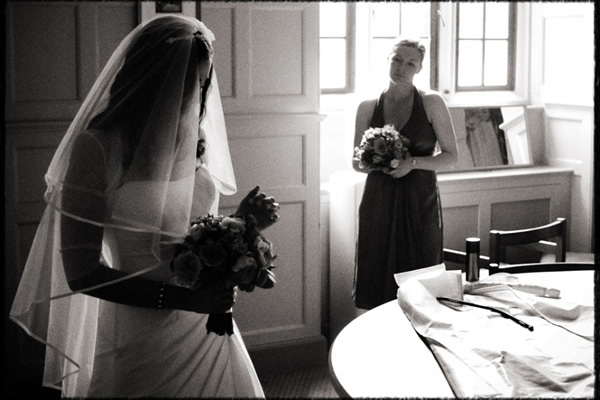
- It can be very helpful to have a visual list of important people before the big day. Ask your bride and groom if they would like to compile a “rogues gallery” of thumbnail images of important family and friends. This can be really helpful when looking for faces and subjects to photograph early on in the wedding.
- Have an emergency morning kit in your camera bag. This could comprise of a small sewing kit, scissors, sticky tape and instructions on how to tie cravattes and ties as well as info on how to wear button holes. No one is going to forget the super helpful photographer who can produce these handy items during the morning preparations.
- Switch the sound on your mobile off for the day. Once you have arrived at the venue you probably don’t need it at all and it will be an unnecessary distraction. I have actually seen photographers checking their phones whilst working. Even if this is on work business it looks very unprofessional and distracts from the job in hand.
- Keep well hydrated and wear sun screen. I generally find that I don’t feel hungry at a wedding but keeping myself hydrated can be a real problem. Don’t rely on being able to get water when you need it, carry a bottle and remember to drink. I know that my concentration and fatigue level increases quickly if I am thirsty.
- During most weddings there will be a part where photographing is extremely difficult. The light might be very tricky, it might be nearly impossible to get the position you need or you might simply not get the images that you want. It is very hard not to lose a bit of confidence at these times and let this effect how you photograph later in the day. Try to compartmentalise the day into sections – if you can’t get exactly what you want during the bridal preparations then that doesn’t mean that you won’t get the best dancing shots that you ever have – keep a positive mindset! I don’t believe that you are only as good as the last wedding you shot – you are as good as your cumulative experience. Keep confident and do the best that you can in every situation.
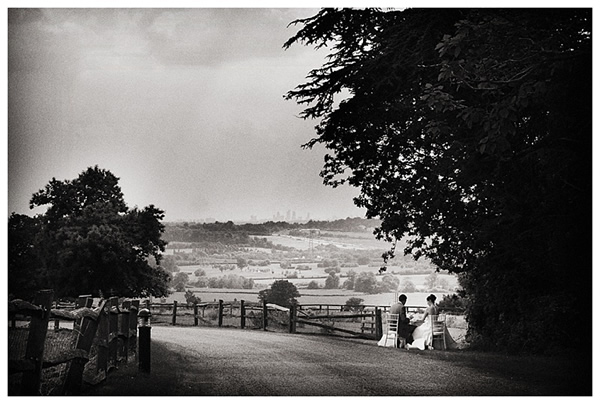
- Be aware that often, when moving from outdoors to indoors lenses and viewfinders will steam up. If this is the case use one camera outside and another inside that has been left inside for a while to acclimatise.
- Wherever possible, avoid travelling on motorways on the way to a wedding. If you get stuck in traffic on a motorway there is often no exit for miles. At least in the same situation on an A road you have the option to U turn or/and turn off.
- Leave early on the morning of a wedding. Generally speaking I like to arrive at least an hour before I am to start shooting. This builds in a good amount of contingency should you have any travel difficulties and also allows plenty of time once you reach the venue to relax, get into the right mind set and be ready for photographing.
- Ensure that your car is serviced and any faults seen to quickly. Make sure you have comprehensive breakdown cover and that your insurance covers you for business usage.
- Check the weather before setting off for a wedding. Snow can be awful particularly. I remember a very early snowy start one winter wedding morning when I took the first train in the morning hours before the wedding and hours before an extremely heavy snowfall took it’s toll on the proceedings. The wedding was two hours late, most of the guests couldn’t get there but I was there on time. No way was I going to let the couple down or forfeit my fee due to a bit of snow!
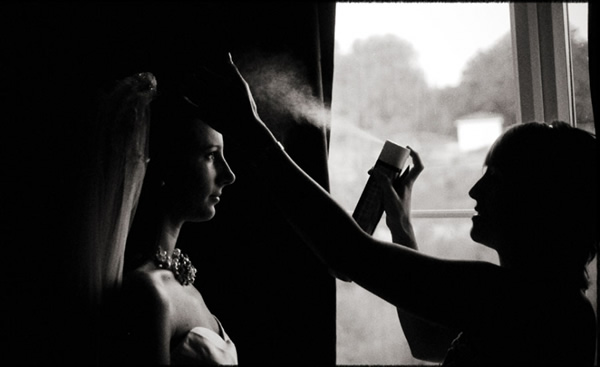
- If driving to the wedding check the traffic conditions. Local radio can be good but Google Maps, with the live traffic report is better. Download the free app on your phone and use it!
- The day before the wedding phone the venue or caterer to introduce yourself, say hello and, most importantly check that your timings for the wedding day agree with theirs. Ask for any particular information that you might need for the venue and, if you are aiming to forge a good relationship with them and hope to get their recommendation, ask of there are any images it would be helpful for them to have taken of the day for them to use. You can do this for other suppliers as well, ask what they might need image wise – they will love you for it!
- Meet with the bride and groom before the wedding and find out the names of important people at the wedding. It is much nicer if you can refer to a few key people by name, particularly when you are organising the group photographs.
- Set realistic expectations with the bride and groom about how and when they will get to see their photographs. If you know that it is going to take a month to process them let them know, don’t rashly promise them in a week, much better to quote four to six weeks and deliver them at the end of week three.
- Make sure that you have all the details of the other suppliers at the wedding. This will be helpful on the day and will also enable you to effectively network after the event as well.
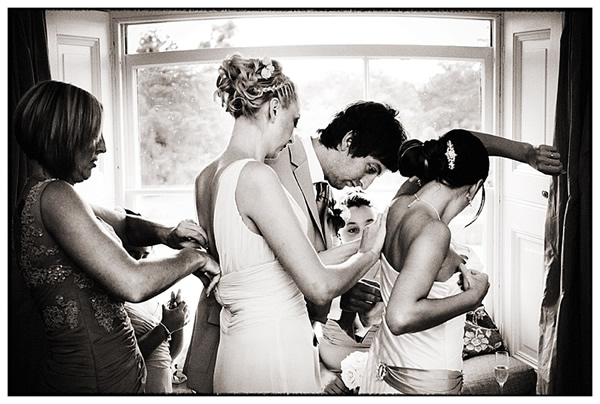
- Ask the bride and groom’s permission to place images on your blog and or social media. A wedding is a private affair and the couple are paying you to create images for them, not images for you to promote yourself. I actually think that far too many photographers photograph for blogs rather than the bride and groom. Don’t assume that the couple will be happy for images of their wedding day to be plastered all over the web.
- Talk to the vicar/registrar when you arrive at the ceremony venue. Check out what they are happy for you to do, where you can photograph etc. Many officials will relax rules and work with you if you explain what you want to do and are friendly and reassuring although, ultimately, they do have final say over what you can or can’t do in a ceremony they are in charge of.
- It’s vital that you get emergency contact details in case anything does go wrong on the day. This should preferably not be the bride or groom but a reliable usher, bridesmaid best man or parent. Also check that people have your mobile number and try to get landline numbers of venues as often the mobile reception may not be reliable.
- Liase with the ushers and the best man and bridesmaids. Introduce yourself and keep in touch throughout the day. They can be invaluable for pointing out who is who, helping gather people for the group photographs and keeping you informed of what is going on.
- If possible edit quickly after the wedding. The longer you leave the editing the less interested you will being the wedding, you will forget what happened and who is who and it will become much harder. You will edit best in the few days after the event whilst it is clearly in your mind and you are still emotionally involved. If possible finish the edit before photographing the next wedding.
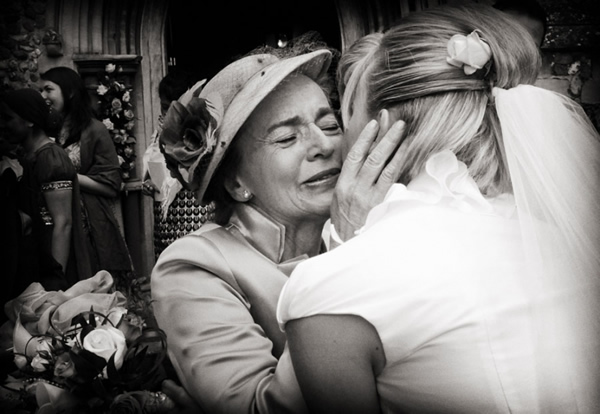
- Check the bride’s entry and exit route from the ceremony. Many venues have more than one entrance and exit and a mix up could be embarrassing.
- When you arrive for the bridal preparations on the morning of the wedding try to be exactly on time. With many brides even a few minutes late can cause anxiety and being a bit early can have the same effect! Be reassuringly and predictably on time.
- Weddings are stressful. However you should never, no matter what happens, get flustered. As soon as you do allow yourself to loose it even a little bit then your judgement, professionalism and images will suffer. As a professional you should learn to deal with the stress calmly and be utterly, calmly unflappable. Let it all out over a large glass of wine when you get home later!
- To save any confusion or bad feeling insist on complete and full payment to be cleared into your bank account before the wedding day.
- Similarly, make sure you have a comprehensive contract and you go through it with the couple before they sign it so that they fully understand it.
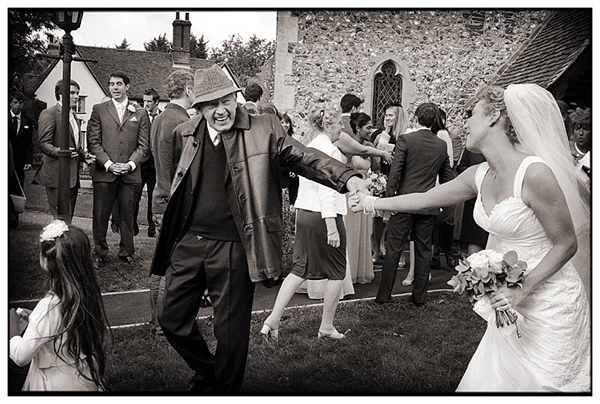
- Insist that you get a full copy of the schedule and timings for the day from the bride and groom. It can be helpful to verbally go through this with them and, if at all possible, before it is finalised discuss it with them pointing out ant suggestions that you might have.
- Get full address details for all locations. Sat Nav systems are not 100% reliable, check out the addresses on Google maps and double check that you are going to the right venue. Some venues have the same or similar names and it could be possible to go to the wrong one. Yikes!
- Wear shoes for comfort. They need to look OK but you will look an idiot if your shoes look smart but you can’t walk for the massive blisters. Always break new shoes in and wear good thick or even double thin socks. Running around photographing a wedding with blisters is not fun. I really don’t want to discuss it any more the memory is too painful – luckily I heeded my advice above and had plasters and cream with me.
- Befriend Uncle Bob. Ok, you might have to suffer a conversation about film v digital or the weight of zoom lenses but ultimately, if you have made “friends” he is more likely to keep out of the way and let you do your own thing.
- Ask the bride and groom for any “must have” shots. They will often have a few in mind and it is always nice to try to accommodate them but explain that it will depend on the conditions and time available on the day. I actually have a disclaimer in my contract stating that I will not guarantee any particular shots. If the bride and groom want a picture of granny but she spits in your face any time you come near there isn’t much you can do about it!
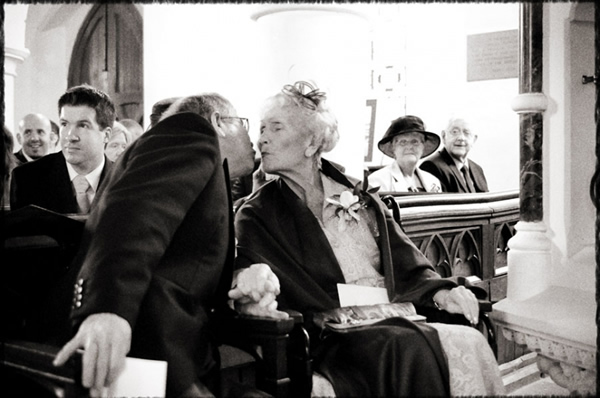
- Work hard at your exposure. Often the auto exposure will give only acceptable results. Wedding dresses should be white (well generally although I have photographed red and black ones!) and suits black – as a professional there really is no excuse for greys or burnt out highlights or muddy blacks. Use exposure compensation frequently and bracket your exposures.
- The same goes for colour balance. Colour should be as accurate as possible during capture. Of course it’s possible to alter this in post production but it’s never as good as getting it right first time. Try to avoid using auto white balance – it is often a compromise. A custom balance is best or use the most appropriate preset.
- Take several spare batteries with you to each wedding. Charge them the day before, rotate them so that they all get equal use but make sure that you have more than enough to last the day and allow for any failures.
- It’s also worth taking a battery charger in the emergency bag in the car. I’ve never had to use one but my cameras are useless without battery power and it’s a reassuring safeguard.
- Obvious, but take much more memory than you expect to use. If you have dual card slots use them. Personally I always use relatively small memory cards and change them every hour or so so that if one fails I loose fewer images. I have never had an issue with my cards however so this might be outweighed by the increased convenience of having bigger cards.
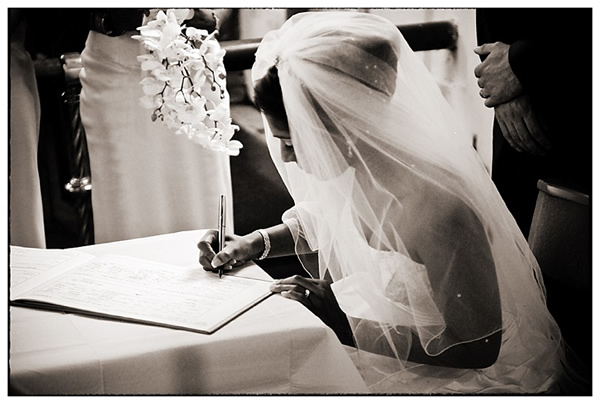
- Plan to arrive in time to take some outdoor landscape shots of the venue before things get too busy. There is rarely time to do this later in the day and it can often be quite time consuming walking around looking for the best vantage point. This can also be a good time to take any images that the venue itself might like to have.
- Have a rough idea of the wedding album design in your mind when shooting. This will ensure that you get a good consistent flow to the day and will also prevent you form over or under shooting one aspect of the day. It is always worth shooting some images in landscape as well as portrait to give a bit more flexibility when designing the album. Generally look for wider setting the scene type images and then hone in to closer more detailed pictures to help tell the story.
- Switch off all annoying beeps and clicks on your camera. Most cameras will have a quiet or even silent mode.
- Never delete any images in camera or on your laptop during the wedding or until you have backed up. There are too many possibilities for error and you might also find that an image you don’t initially like has some hidden merits on a second viewing after the day.
- Set realistic expectations about the images with the bride and groom. If they are getting married at an inner city 1950′s registry office they are not going to get sweeping country panoramic views for example. Or, if the weather looks poor it will effect the type of images they get as most will need to be taken indoors. Discuss these limitations and set realistic expectations. It can be surprising how these rather obvious things often need to be pointed out.
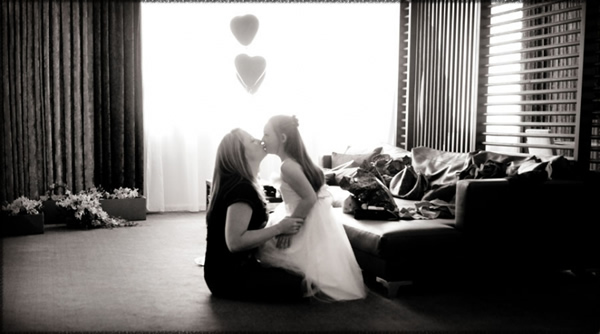
- Be prepared to make suggestions on the wedding day based on your experience. Often guests will not know where to go or what to do or the bride and groom will be a little lost. Often it’s good just to go with the flow but sometimes a little guidance can go a long way. I remember a while ago a bride and groom really wanting a confetti shot outside a busy inner city church. On the day there were roadworks outside and, as the guests came out of church general chaos was about to ensue and clearly the confetti shot wasn’t going to happen. I generally don’t like to organise the proceedings at a wedding at all but I could tell that the bride and groom weren’t going to get the photographs they wanted unless I intervened. I organised and guided the guests and actually set up a confetti photograph. Afterwards, later in the day, the bride’s sister thanked me profusely for taking charge and organising the shot.
- Clean your camera sensor before each wedding. It’s relatively easy to remove a dirt spot in the sky in post production but another thing entirely to clean one off Grandma’s face in a group photograph!
- Ensure that your camera and lenses are serviced as required and check that everything is working the day before the wedding. You must carry at least one back up camera and lens with you to a wedding. Cameras do break for no reason sometimes, the shutter on one of mine broke during the group shots at a wedding once. I simply picked up the back up camera and carried on.
- Take regular refreshing breaks. You will photograph better if you take short breaks. Make yourself switch off for a few moments and then come back to things with a fresh viewpoint. A break might be as simple as coming back to your camera bag for some water or sitting out for a few moments. High level photography takes intense concentration and punctuating that concentration with “power breaks” will keep you fresh and alert.
- Keep fit. I started running three times a week about six months ago. Quite simply I can now sustain photographing an eight or ten hour wedding day noticeably more easily and with much quicker recovery time the day after than I could a year ago. It’s probably my age though – I’m 46, if you are 25 this one probably doesn’t apply!
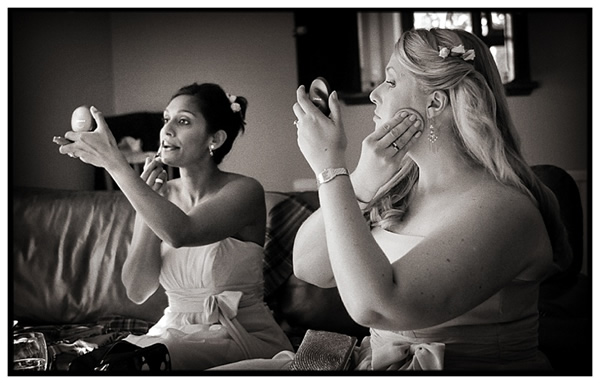
- Learn the art of anticipation. This is one of the great skills a photographer needs to nurture. Some photographers have a natural ability to read people, anticipate what will happen next and know which will be the best position to be in. It is a skill that can be developed and requires a great deal of concentration and imagination.
- Don’t look at other photographer’s wedding photographs because you will end up trying to photograph like them. There is no point in trying to photograph like someone else, you need to learn to photograph like you. Study the work of other great photographers in other fields of photography and let them be your influence and your inspiration, If you can find your own unique photographic voice, communicate it to your clients and make it commercially appealing and viable you will be a great wedding photographer!
- Don’t run – conserve energy. Try not to spend your time chasing shots. Wait for the action to come to you. Check your positioning, anticipate, check composition and work at your timing. There will also be many spontaneous moments where your reactions, anticipation and timing get the shot but many more will come through pre visualisation and craft.
- Practice. Not just at weddings but in between weddings as well. Being a good photographer is like being a musician or a carpenter – you need to practice regularly and work at it. If you know that your table shots aren’t great then practice for example!
- Don’t spend time reading about camera equipment. A better camera or lens rarely makes you a better photographer. The time and money would be better spent on studying great photographer’s work, learning and honing your technical skills and practising with the equipment you do have. That’s not to say that, when the time is right, you shouldn’t research your purchases thoroughly but become interested and obsessed by great photography, not by equipment.
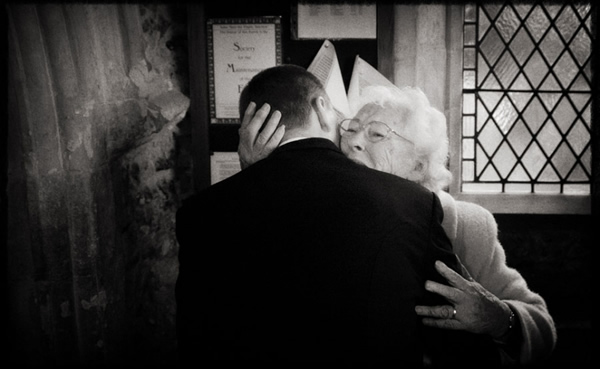
- Polish social your social skills. Great wedding photographers usually have great photographic technique followed by great people skills. An ability to get on with people, make people feel at ease with you and to gain their trust is invaluable.
- Get a good nights sleep the night before a wedding. A good eight hours with no alcohol the night before will reap benefits in terms of alertness and stamina on the wedding day itself. Go out after the wedding and celebrate if you still have the energy – it’s much more fulfilling then!
- Get up in good time on the morning of the wedding and have everything ready the day before. Try to keep the morning as stress free as possible by having everything ready the day before. Personally I like to have a leisurely breakfast, shower and chill out for a bit by watching a bit of TV or reading.
- Get nervous before the wedding. Nerves are good (within reason). They give you the kick you need to perform at your best, a bit of nervous stress can help focus your thinking and help you perform at your sharpest and best.
- Take energy giving snacks with you to the wedding to eat throughout the day. Avoiding heavy or greasy food is best and eating little and often is good!
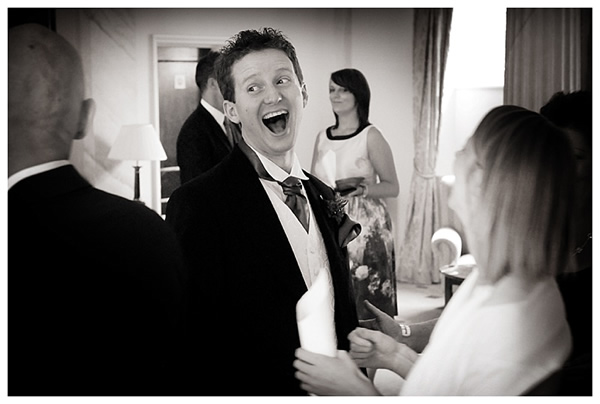
- At the end of the evening when it is time to go it is a really nice touch to make sure that you have said a proper goodbye and thank you to the bride and groom, possibly their parents and also any other members of the wedding that you have chatted to or have helped you through the day. It is also a nice touch to say goodbye and thank you to any other suppliers who may still be there as well.
- Send a congratulatory email to the bride and groom a day or so after the wedding and reassure them that the images are safe, you are getting on with editing them and remind them of when to expect to see them. This email will often result in a reply thanking you for being part of the day which can often be quoted as a testimonial or similar.
- Often the bride and groom will give each other presents to be opened in the morning whilst they are getting ready. Keep an eye and ear out for info about this as it can be nice toi get a good image of a present being opened or used.
- Take great care when reversing backwards with a camera to your eye. Small bridesmaids are easily crushed by large photographers and it’s very easy to trip over backwards. Wherever possible try to avoid going backwards without looking but, where it is unavoidable (when revering down a church aisle for example as the bride and groom leave the ceremony) have a go at photographing with one hand and reaching the other one out behind you to check there is no one in the way.
- Look for ways to help out other suppliers during your down time. You might think that you need all of the rest time you can get but going out of your way to offer help where it is needed makes you stand out and memorable. I have helped florists carry things, photo booth people set up, fetched and carried etc etc. Being part of a wedding is a team effort.
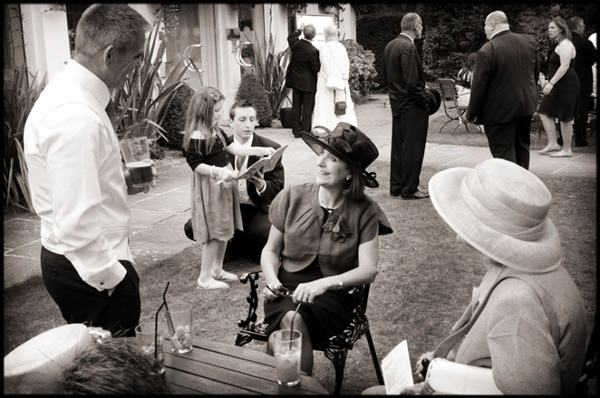
- Hand edit every image individually during post processing. Of course batch processing has its place and you may well batch process everything and then work individually on each image but every single image should be the best that you can produce in the time that you have available. There is a noticeable difference between an image than has had a few moments of individual work done to it to one which has just been run through an action or preset.
- Edit scrupulously and only show your very best final photographs. How many images do the couple really need to see? I have heard some photographers proudly announcing that they give the couple thousands of images from a wedding day. Do they really need this number? Surely they include some duplicates and weaker shots? It makes much more sense to edit severely, show only your very best work and give the couple a much higher quality output.
- Take a tripod/monopod. I use one very rarely but they do have a number of creative uses in terms of low light photography, outdoor floodlit shots etc. I wonder if it might be a good idea in some circumstances to have the camera mounted on a large tripod when doing the group shots. I think at a large wedding this would allow the photographer to stake his/her territory a bit more clearly and keep the hundreds of other guest snappers slightly out of the way!
- When you arrive at a new venue have a good walk around and find out where a few key areas are. Look for places to do the group shots, bride and groom shots, potential places for landscape shots of the venue. Also see which direction the sun is coming from, where might you be if it is raining, where are the toilets? It can also be good to go off the beaten track a little bit and look for unusual backgrounds and angles in the less obvious places as well.
- The family group shots aren’t a particularly exciting or glamourous part of the wedding but they are incredibly important, particularly to the older generations of the families. Plan with the bride and groom who will be in them well before hand and work out exactly where you are going to do them well in advance. If you want to do them well away from the main wedding party will elderly relatives be able to get that far? If you want to do them on grass will everyone be OK walking on the grass in high heels? Look at the background and light and, most importantly have a back up plan to put into action in case it rains or is too cold or windy to be outside.
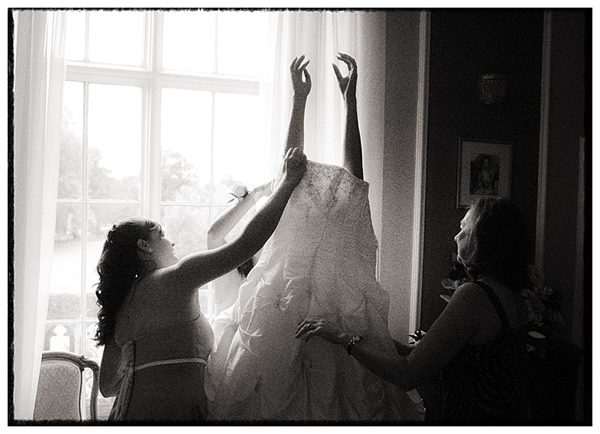
- Consider your body language. A huge amount of our communication is none verbal. Do you stalk around a wedding looking aggressively for photographs? Does your body language allow you to merge into the background unnoticed? How can you move around and create as little impact as possible? How should you behave when a bride is getting dressed in her bedroom moments before one of the biggest events of her life? Your non verbal attitude can make a huge difference to how people perceive you, how they react in your presence and therefore to the final images that you get.
- Smile and look relaxed. Even if you are not! This links to the tip above, if all else fails smile and at least look relaxed and confident. A smile goes a very very long way, covers up all sorts of problems, diffuses all sorts of situations and breaks down all sorts of barriers. You generally get back a reflection of your own perceived persona from your subjects – if you look happy and relaxed the chances are they will too.
- Look after your camera bag and place it very carefully at a wedding. Firstly security is of paramount importance both in terms of making sure that your bag isn’t in an open public space and vulnerable to thieves and also making sure that wherever you place it doesn’t create a trip hazard for guests. Secondly it needs to be easily accessible to you at all times. Remember that many churches and venues will lock the doors to the ceremony room shortly after the service has finished. You might well be busy photographing guests outside and then find, to your horror, that all your equipment is locked away out of reach. This does happen – it’s happened to me more than once – and whilst it hasn’t been a major problem in that I have always been able to quickly get the building unlocked again, it could potentially be a bit of a disaster!
- Work with the light. All rooms and locations have different lighting situations and, rather than trying to fight the light and complain in your mind about it, learn to work with what you have got and go with the flow. I think it can take a few minutes in any given situation for me to be able to really understand the light and what is possible. Take your time, think through the options, try a few things out and try not to resort to blasting everything with flash!
- Listen to what is going on around you. Be alert to people’s conversations, people laughing, people giving clues to what might happen next. By keeping your ears as well as your eyes open you double the chances of being in the right place at the right time for the shot.
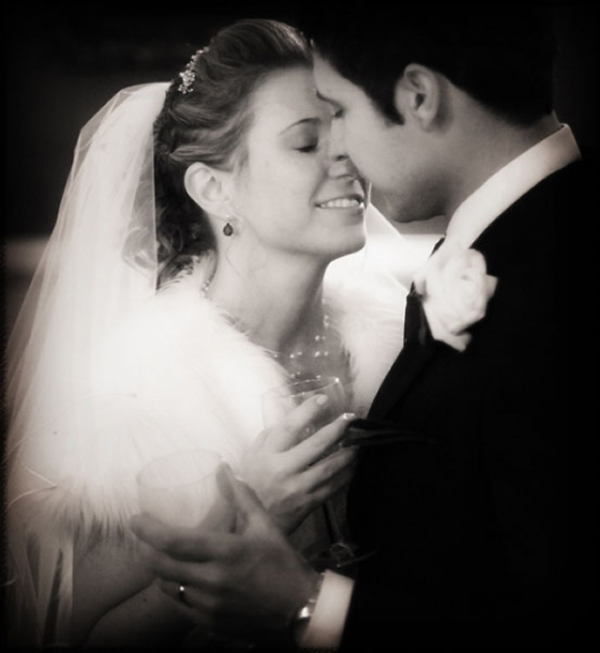
- Back up ASAP. As suggested above I download everything onto a laptop during the wedding but also create another back up as soon as is possible after the wedding. One version of everything just on the memory cards is unstable and risky, two copies much more acceptable, three copies feels safe. It’s also worth keeping the copies in different physical locations if possible as well.
- Take Sunday off! And Monday as well if you can so that you have a two day weekend. Weddings are great but having fun with your own family or whatever you love to do is better!
- What is the real back up plan? What will actually happen if you are ill on the day, one of your family is taken into hospital or you can’t make the wedding for some other reason? Of course you will have insurance to cover the financial aspects but what will actually happen on the ground? You should have a cast iron plan in force, in writing in fact so that you have a procedure that you, or someone else can go through should the worst happen. You may well not have the time or brain space to deal with it at the time – sort it out before hand and be prepared.
- I always keep my camera gear with me at all times on a wedding day. I might be being rather paranoid but I don’t even lock my camera in the car boot on the way to the wedding in case the boot lock fails – I keep it by my side. If I need to stop for petrol I take the camera bag inside with me. After the wedding I am a little more lax but I do always keep the memory cards with me at all times until I get home. I don’t feel it’s safe to leave equipment and relatively priceless files on cards in hotel rooms for example.
- Have a long break during the wedding breakfast, go somewhere private, have some down time and eat away from the guests. Sometimes you will get invited to eat with the guests but I think it is much more professional to eat alone, have some quite reflection and thinking time and to have some proper rest!
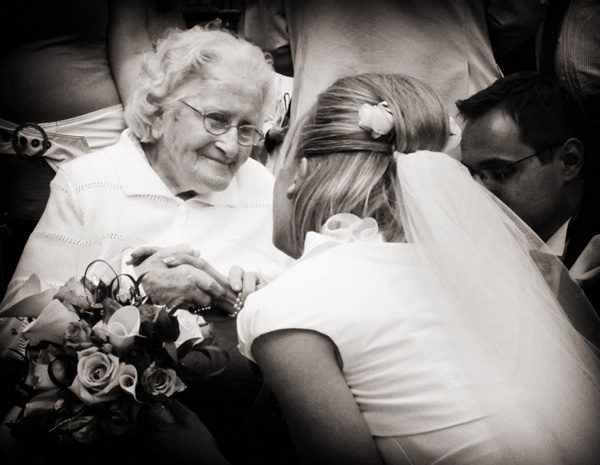
- It’s really difficult not to get in the way when photographing the speeches. In a large room you will almost inevitably need to stand in front of seated guests to get the images you need so try not to stand in the same place for too long so that they can look at the bride and groom rather than suffering a long term view of your bottom! I often use a 70-200mm lens at this point in the day, often mounted on a mono pod so that I can stay relatively still, photograph from the edges of the room and not get in the way at this point in the day.
- Try not to constantly chimp! Guaranteed you will miss opportunities whilst looking down to see if you got the last shot
- However don’t chastise yourself each time you do miss an opportunity. You will always miss more than you get and it is important to keep a positive mindset at all times.
- During the ceremony have a good look round the congregation and mentally list who the important people are so that you know who to look out for to photograph later. It is generally quite easy to spot people and work out who they might be from where they are sitting.
- Learn some basic wedding etiquette. Who should sit where, which side is a button hole worn, should the bride really be late?

- Take a small first aid kit with you. Headache tablets and plasters should be an absolute minimum. If you are a hay fever sufferer take tablets!
- Do you eyes work? I am a contact lens wearer and so take spare solution and lenses in my emergency bag as well as a pair of glasses. If you do wear glasses/lenses what happens if you lose them or they get broken?
- Never still be doing group shots when the venue and caterer are expecting the guests to be sitting down for dinner. It is your professional responsibility not to hold up proceedings at this vital time of the day even if everything was running late beforehand.
- Don’t act like a photographer with a massive “stalker” zoom lens. Do I need to say any more?
- Buy the best memory cards and reader device available. Change them more frequently than you change your camera body to ensure reliability and don’t use a new card at a wedding for the first time until you have tested it out.
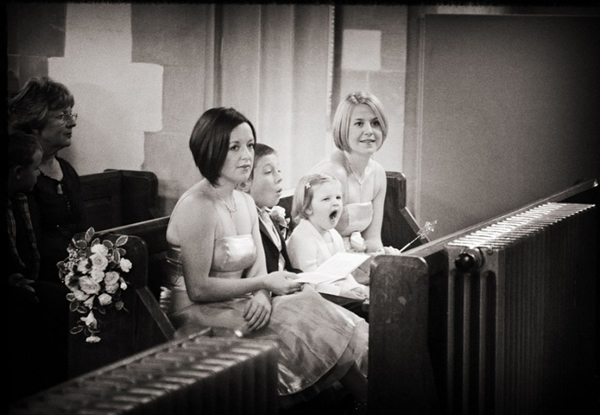
- Take more than one shot of each moment. Each wedding may be comprised of many moments and each of those moments should be recorded in several different ways by the photographer. If it is an action moment then often two or three exposures in quick succession will greatly improve the chances of success. If you are recording the table decoration and things are more static then work with the subject and try different angles etc. Rarely is the first idea or shot the best. The best shots take time and craft to produce, you may need to work hard and try several different things before you get the shot you want. Look at some of Cartier Bresson’s contact sheets to see this in practice.
- Iron your shirts/tops the day before. One mistake with an iron and you could be shirtless – at least if you burn a hole in your clothes a day before you have chance to replace them!
- Take your business cards with you. I have booked a number of weddings from being asked for my contact details at a wedding and they are useful to exchange with other suppliers. You may be able to leave some with the venue as well.
- If you are going to produce an online gallery of the images place cards on the reception tables with the details of where to find the gallery on them. This dramatically increases online sales but you must, of course, ask the permission of the bride and groom first.
- Whilst looking through the viewfinder waiting for the right moment to take the shot keep both eyes open. Very often there will be an opportunity outside of the viewfinder that you may well miss otherwise.
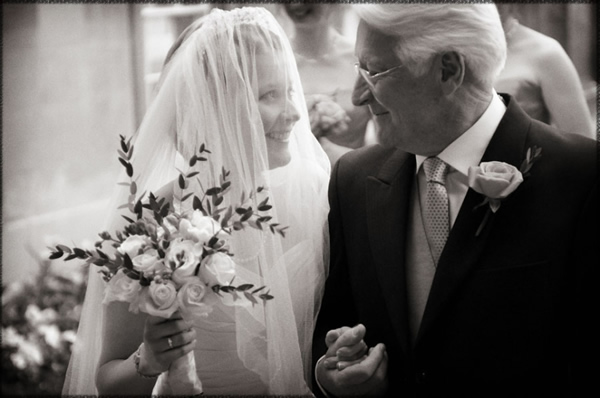
- Before leaving the wedding in the evening go through an equipment and memory card checklist to ensure that you have everything with you. Personally I am quite good at leaving flash units behind and it would be easy to leave a battery charger or similar plugged into a wall socket.
- Work out what your motivation is. Why do you photograph weddings, what drives you, what appeals to you and what do you find easy or difficult? By understanding your own motivation and your own mind you will become a better photographer, will be able to photograph in your own style and bring a level of maturity and authenticity to your work.
- Enjoy, if not love photographing weddings. If you don’t it’s the job from hell and you owe it to yourself, your family and your clients to stop doing it!
- Become a creature of habit. Creating this list has shocked me by making me realise how many of the above tips have become ingrained habits in my wedding day routine. I am far from perfect and the list is by no means exhaustive but, by going through set routines you reduce the risk of error.
- My goodness you’re are still here 99 tips later? Ok, tip number 100 – Don’t work in isolation. If you have found the above helpful please spread the word and share it with any other photographers you know – the more the better. I am sure I have missed many tips out that other photographers swear by – if you would like to add a tip of your own please feel free to comment below!
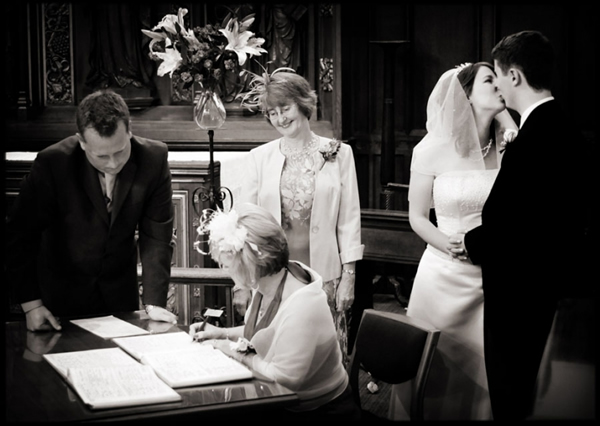
About Andrew Hind
My first photographic experiences were as a teenager developing black and white images in a make shift dark room in my parent`s bathroom. I went on to develop what became a passion, via a rather circuitous route as a musician and a teacher, into a career as a photographer. I trained initially with Brian Barret and Andrew Coe at the Norwich School of Photography, subsequently was mentored by Damien Lovegrove and recently was accepted as a member of the Artistic Guild of the Wedding Photojournalist Association.
I created Lightworks Photography in 2003 and have loved and nurtured it ever since. From the beginning I have been committed to providing transparency of communication and a great client experience, I have always guaranteed my work to offer complete peace of mind and have gradually over the years forged a unique style and brand of imagery whilst offering unique fully inclusive coverage.
I’ve been described as creative, energetic, enthusiastic and a little bit quirky (in a good way!). I love people, having a great time, chocolate and music, I drive a classic car older than me and have two beautiful children.
You can find Andrew Hind on the Web:


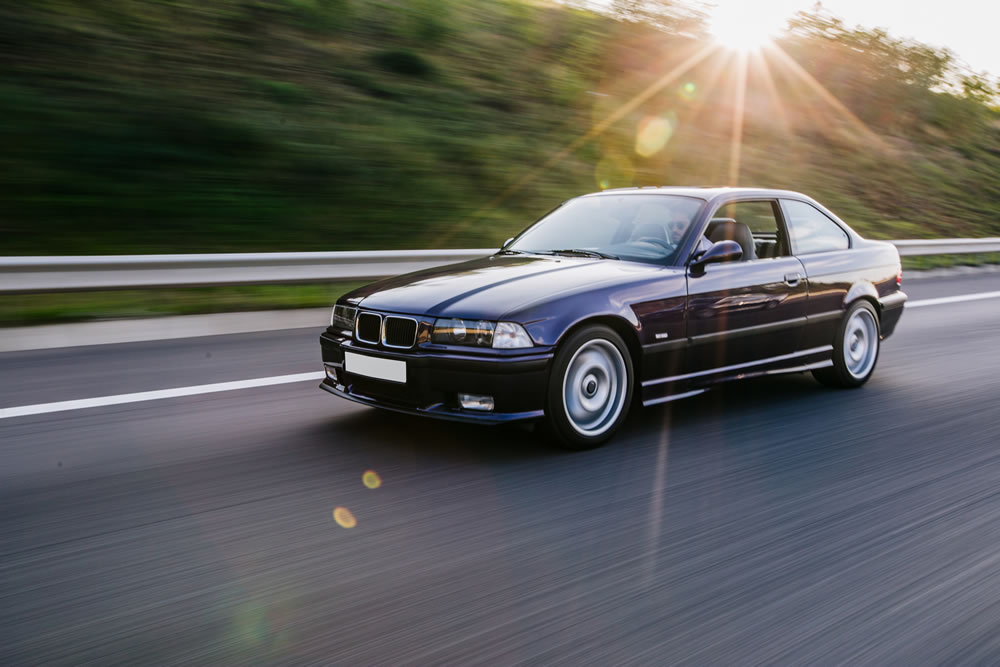
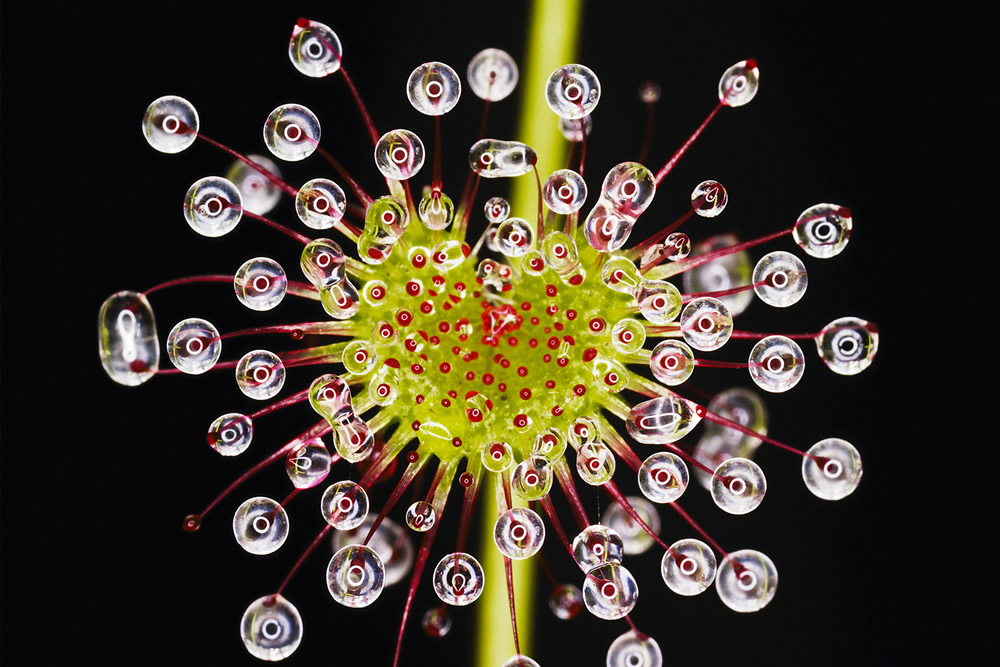
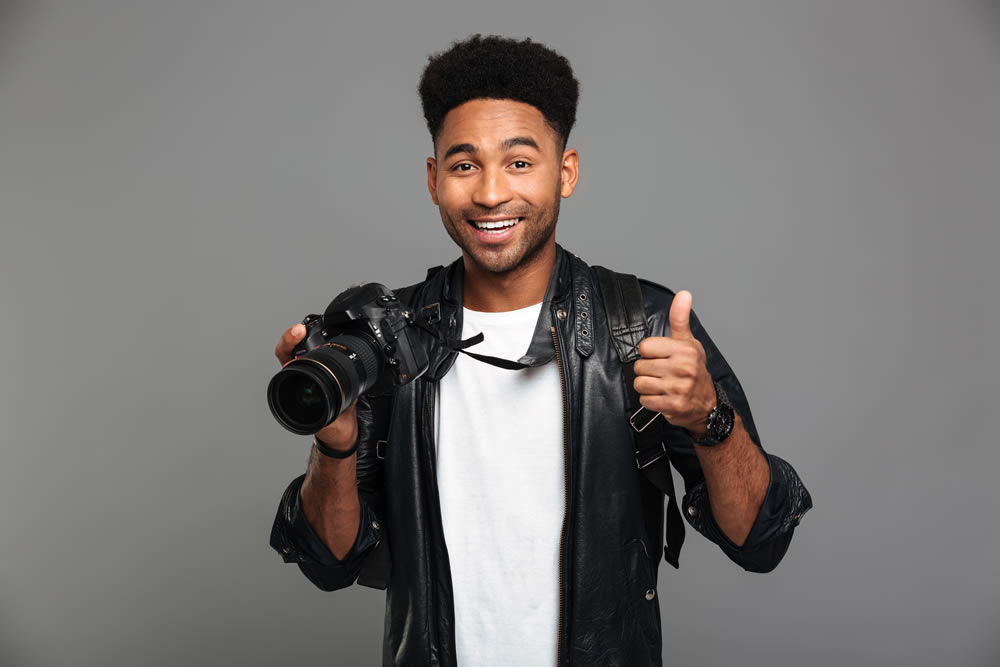
1 comment
Till now, I just read the post containing 14 tips maximum 20 tips but your post is about 100 tips. Wow! It’s a great work from you. I really like the post so much. After reading this no need to read any tips.